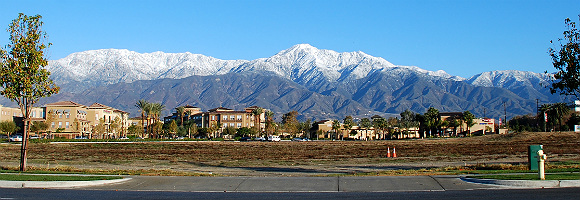
(Photo Credit: Cheryl R. Swain/Flickr)
Originally published in the Inland Valley Daily Bulletin.
California means many different things to different people, but the image that is cast in many minds — both within the state and to millions across the country — is often a little misleading. Mention the state and people think about movies stars, the technology that changed civilization and some of the world’s best wines, to name a few things.
But mostly the Inland Empire is not about those things, and that is a point we can drive home, in a big way, when the leading economic leaders in the state convene in Ontario in less than 11 months for the 2015 California Economic Summit.
This is the state that has the ninth largest economy in the world, but it did not get that way only because of Hollywood, Silicon Valley or the wine country. California grew exponentially because this was where people came to work, starting with the effort to win World War II. They developed steel for warships in Fontana, built amphibious landing vessels in Riverside and tested military aircraft in Ontario. Crews also helped heal some of the war’s wounded in Corona, Redlands, Banning and San Bernardino.
After holding economic summits in Santa Clara, Los Angeles and Sacramento, California Forward and the California Stewardship Network, the two agencies that collaborate on this event, are bringing it to the place where 4.3 million of those California working-class people live. The 2015 California Economic Summit will be on Nov. 12-13 in Ontario.
The summit assembles key economic leaders from all over the state, and its goal is to underscore how critical it is for all of California to thrive. The 2015 event is part of big-picture plans that will advance what is called a “triple bottom line”: a prosperous economy, a sustainable environment and equity among all communities.
We in the Inland Empire can use those two days to remind the rest of the state that we are a big part of the state’s economic backbone. We work in factories, warehouses, offices, hospitals, truck depots and hundreds of other blue- and white-collar venues. We need to make sure the rest of the state’s leaders understand that we must have an environment that allows those jobs to grow.
We are also the people that had the best view of the Great Recession. A unified presentation next November, one where both Inland counties and all of its cities come together, will demonstrate our resilience and our determination to build a better life for everyone who lives here.
In the last two years the summit has identified policy initiatives designed to improve the state’s economy, including advancing manufacturing, developing a trained workforce and updating California’s infrastructure.
All of these initiatives are important to the Inland Empire, and by coming together next November, I know that is a case we can make.
Paul Granillo is co-chair of the steering committee of the California Economic Summit and president and CEO of the Inland Empire Economic Partnership.

